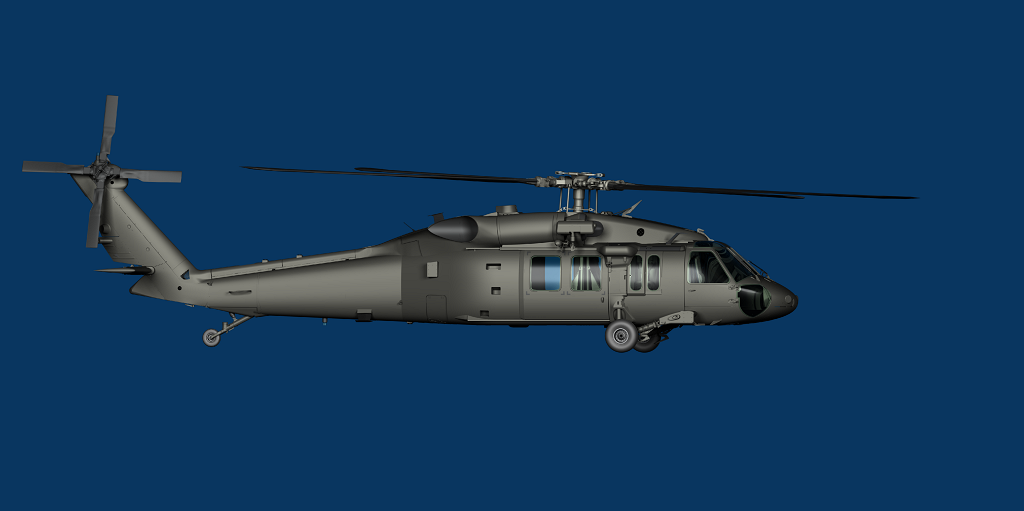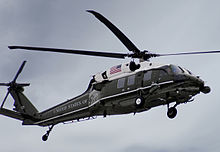Why the Sikorsky S 70 is the Preferred Choice for Modern Helicopter Missions
Why the Sikorsky S 70 is the Preferred Choice for Modern Helicopter Missions
Blog Article
High-Performance Multi-Role Rotorcraft Featuring Advanced Cabin Technologies and Integrated Sensor Equipments
The world of rotorcraft modern technology has seen significant innovations in current times, specifically in the world of high-performance multi-role rotorcraft outfitted with innovative cabin technologies and perfectly integrated sensor systems. These innovations have not just augmented the operational capabilities of rotorcraft but have likewise considerably affected modern-day aeronautics procedures on different fronts. From improved goal adaptability to improved functional performance, the merging of innovative cabin innovations and integrated sensor systems has actually ushered in a new era of opportunities for rotorcraft applications. In the complying with discussion, we will explore the evolution of rotorcraft modern technology, delve right into the world of innovative cabin technologies, and analyze the ramifications of integrated sensor systems on the functional flexibility and effectiveness of modern-day rotorcraft.
Advancement of Rotorcraft Technology
The advancement of rotorcraft technology has actually been marked by considerable innovations in aerodynamics, materials, and propulsion systems, shaping the abilities and efficiency of contemporary rotorcraft. Aerodynamic renovations have actually boosted the performance and maneuverability of rotorcraft, enabling for enhanced rate, agility, and security throughout trip (sikorsky s 70). Technologies in materials, such as making use of composite materials and advanced alloys, have caused lighter yet more powerful rotorcraft frameworks, boosting general efficiency and sturdiness. Furthermore, developments in propulsion systems, consisting of more powerful engines and innovative propulsion technologies, have allowed rotorcraft to accomplish higher elevations, faster speeds, and greater hauls.
These developments have not only changed the capabilities of rotorcraft but have additionally increased their applications across various sectors, including military, business, and emergency situation services. The continual evolution of rotorcraft technology remains to drive technology in the area, pressing the limits of what is possible and forming the future of vertical flight.
Advanced Cockpit Innovations
Building upon the fundamental developments in aerodynamics, products, and propulsion systems, the realm of rotorcraft modern technology now changes emphasis in the direction of pioneering Advanced Cabin Innovations. The integration of cutting-edge innovations within the cabin environment plays a critical duty in enhancing the operational capacities, security, and performance of modern rotorcraft. sikorsky s 70. Advanced Cockpit Innovations include a vast range of features developed to give pilots with boosted situational awareness, structured information management, and intuitive control user interfaces
One of the crucial developments in cabin design is the application of glass cabins, which replace traditional analog evaluates with high-resolution displays. These digital systems supply personalized layouts, real-time data assimilation, and enhanced readability, enabling pilots to gain access to crucial info at a glance. Advanced avionics systems, such as fly-by-wire controls and augmented truth screens, are reinventing just how pilots communicate with the airplane, enabling for exact control and improved decision-making capabilities.


Including advanced cabin advancements not only enhances pilot efficiency however also adds to general objective performance and security in complicated functional settings. By leveraging advanced technologies within the cabin, rotorcraft manufacturers are setting brand-new requirements for operational quality and objective success.
Integrated Sensor Equipments
With the evolution of rotorcraft modern technology, the integration of innovative Integrated Sensor Systems has ended up being critical in boosting operational performance and security. These he has a good point Integrated Sensor Systems incorporate a vast selection of innovations that provide critical data for various functions such as navigating, security, targeting, and environmental surveillance. By effortlessly incorporating sensors like radars, cams, lidar, and infrared systems into rotorcraft, operators can take advantage of improved situational understanding, enhanced objective capacities, and reduced pilot workload.
One trick advantage of Integrated Sensing unit Equipments is their capability to collect real-time information and offer actionable understandings to pilots and mission operators. Advanced radar systems can detect and track targets over long ranges, permitting for very early risk discovery and efficient response planning. Additionally, integrating electro-optical and infrared cams makes it possible for rotorcraft to perform reconnaissance and security goals with precision and accuracy.
Fundamentally, the integration of advanced sensing unit modern technologies right into rotorcraft not just boosts operational effectiveness however likewise contributes substantially to general objective success and team safety. As rotorcraft remain to progress, the function of Integrated Sensor Systems will undoubtedly remain at the center of technology in the aerospace industry.
Functional Convenience and Efficiency
Enhancing operational flexibility and efficiency in rotorcraft is a natural development from the combination of innovative Integrated Sensing unit Solutions. By why not try this out leveraging the data and understandings offered by these cutting-edge sensing unit systems, rotorcraft can optimize their performance throughout different goals and atmospheres.
Operational convenience encompasses the capacity of rotorcraft to adapt to various duties and circumstances effectively. With advanced cabin innovations and incorporated sensor systems, rotorcraft can flawlessly transition in between jobs such as search and rescue, medical discharge, monitoring, and extra. This adaptability improves the rotorcraft's capacity to satisfy varied functional demands without requiring extensive reconfiguration.
Performance in rotorcraft procedures is critical for optimizing mission efficiency and source usage. Integrated sensing unit systems play a critical function in boosting operational performance by providing real-time data on weather, terrain mapping, target monitoring, and much more. This information makes it possible for pilots to make enlightened choices swiftly, maximize trip paths, save gas, and enhance general mission productivity.
Influence On Modern Air Travel Procedures

In addition, the combination of innovative sensors facilitates improved objective preparation and execution, enabling rotorcraft to carry out a broad variety of jobs with boosted accuracy. From search and rescue procedures to aerial firefighting and police goals, the capacities of modern rotorcraft geared up with sophisticated cabin innovations and integrated sensing unit systems are unparalleled.
Moreover, the effect of these innovations expands past functional performance to cost-effectiveness and use this link sustainability. By maximizing trip routes, gas intake, and upkeep schedules, high-performance rotorcraft equipped with advanced cockpit technologies and sensing units add to lowering operational prices and ecological influence, making them important possessions in modern air travel operations.
Conclusion
Finally, the high-performance multi-role rotorcraft with innovative cabin innovations and incorporated sensor systems stands for a substantial evolution in aviation technology. These advancements improve functional flexibility and effectiveness, eventually influencing contemporary aeronautics procedures in a favorable method. The combination of these innovative technologies enables improved capacities and efficiency in different goal scenarios, showcasing the proceeded development of rotorcraft innovation in the aviation sector.
The world of rotorcraft technology has actually seen remarkable improvements in current times, particularly in the realm of high-performance multi-role rotorcraft outfitted with innovative cabin modern technologies and effortlessly integrated sensor systems. From boosted goal convenience to improved functional performance, the merging of advanced cabin innovations and integrated sensor systems has ushered in a new period of opportunities for rotorcraft applications. In the complying with conversation, we will certainly discover the advancement of rotorcraft innovation, dig right into the world of sophisticated cockpit developments, and check out the effects of incorporated sensing unit systems on the operational versatility and efficiency of contemporary rotorcraft.

Report this page